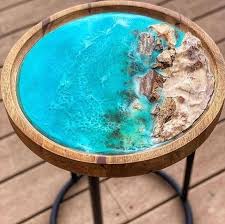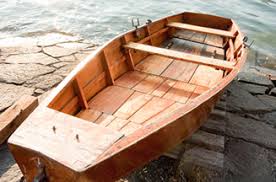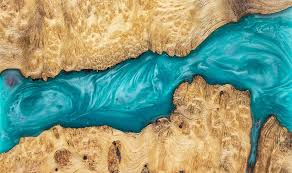 Most of us hear a lot about epoxy because of the many ways that it can be used. We hear about how it is used to provide boats with a high gloss shine that protects it. We hear about how it can make wood furniture more beautiful. Useful in crafting and creating river tables. The question is, do you really know the difference? Is there a difference between epoxies? We decided to find out. Here is the truth behind marine epoxy vs river table epoxy.
Most of us hear a lot about epoxy because of the many ways that it can be used. We hear about how it is used to provide boats with a high gloss shine that protects it. We hear about how it can make wood furniture more beautiful. Useful in crafting and creating river tables. The question is, do you really know the difference? Is there a difference between epoxies? We decided to find out. Here is the truth behind marine epoxy vs river table epoxy.
Marine Epoxy
 In marine applications, such as a boat, plywood may be saturated with epoxy. This makes it extremely waterproof. It can also be used to apply fiberglass tape and cloth. The trick is thin layers. It isn’t an epoxy that needs to be deep poured. It works well as an adhesive and a sealant.
In marine applications, such as a boat, plywood may be saturated with epoxy. This makes it extremely waterproof. It can also be used to apply fiberglass tape and cloth. The trick is thin layers. It isn’t an epoxy that needs to be deep poured. It works well as an adhesive and a sealant.
The best marine epoxy consists of two parts. One is the resin. It is combined with a hardener of some sort. In most cases, you mix it 1:1, but you should always follow the directions on your epoxy brand to find out for sure how to mix it. Too much of one or the other can mean that it does not cure properly and may allow water to seep in. It also has a very short workable time. This is because it often is used to pour onto surfaces that may be underwater.
Other Epoxies (Deep Pour Epoxy)
 The epoxy that is used to create furniture like river tables is different. Typically, this will be done with polyester or casting epoxy. Neither of these products work well as an adhesive. They can seal, they can be deep poured, typically using a 1:1 ratio, but they are unable to keep up with the constant “wet” that comes from living in the water.
The epoxy that is used to create furniture like river tables is different. Typically, this will be done with polyester or casting epoxy. Neither of these products work well as an adhesive. They can seal, they can be deep poured, typically using a 1:1 ratio, but they are unable to keep up with the constant “wet” that comes from living in the water.
This epoxy has a longer working time before it begins to set, which allows you to spread it or pour it as thick as you need. However, most recommend that you still consider layering it, especially the first coat. If you are still unsure about the benefits of using deep pour, you can learn more at http://deeppourepoxy.com. This is a one stop shop for all things thick pour resin. Whether it’s river tables or large castings, Deep Pour has it covered.
Which is Best for Your Needs?
Marine epoxy is really only usable for quick setting applications and thin layers. It is also more costly. Therefore, most people will use other epoxies for crafting and creating furniture. By doing this, they have more flexibility when working with it. Most deep pour epoxies allow you up to 15-20 minutes. However, this does depend on the temperature range that you are working in. If it is warm in your shop, it may begin to cure and harden faster. Too cold in that space and it could take longer.
An ideal temperature of 60-80 degrees allows you to create jewelry, coat tables, and pour a river. In almost all situations, the epoxy will cure properly and you will have a finished piece that you will be happy to show off to others.